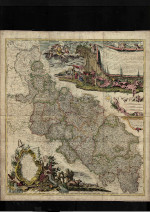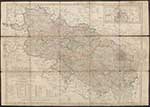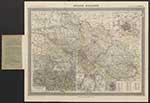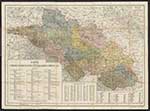Silesia
Silesia (Pol., Śląsk; Ger., Schlesien; Cz., Slezsko), is a region at the borders of Prussia, Saxony, Bohemia, Moravia, and Poland. Silesia was disputed territory from the tenth century. Around 990, it was separated from the Bohemian lands and became part of Poland. In the period of the regional fracturing of Poland, the majority of the Silesian princes accepted the sovereignty of the Czech king, which Kazimierz the Great eventually acknowledged, abdicating Silesia to Bohemia. The Habsburgs ruled it from 1526, and as a result of the Silesian Wars (1740–1763), the majority of its territory came under Prussian rule, with only the southeastern regions remaining in the realm of the Habsburgs. The latter region, Austrian Silesia—comprising the principalities of Teschen (Pol.,Cieszyn; Cz., Těšín), Troppau (Pol., Opawa; Cz., Opava), and Jägerndorf (Pol., Karniów, Cz., Krnov)—remained under Habsburg rule from 1742 to 1918. Although the 1812 Prussian edict of emancipation expanded the rights of Jews, serious restrictions remained in force until 1848, and some obstacles to full freedom of occupation persisted until the fall of the empire. The latter decades of the nineteenth century saw emigration from older and smaller settlements and a concentration of Jews in Breslau, where in 1871 they numbered 13,916 or 6.7 percent of the population (rural communities of Jews in Silesia had virtually disappeared by 1900).
Full article at the YIVO Encyclopedia
See also: http://www.jewishencyclopedia.com/articles/13661-silesia
Silesian Jewish Communities: Katowice, Osoblaha, Wroclaw
|
Novissimum-Silesiae Theatrum (1745) J.J. Lidl
Source: The National Library of Poland |
 |
|
Schlesien (1810) D.F. Sotzmann
Source: http://www.bibliotekacyfrowa.pl/dlibra/docmetadata?id=40301 |
 |
|
Provinz Schlesien (1905) F.Handtke
Source: http://www.bibliotekacyfrowa.pl/dlibra/docmetadata?id=41193 |
 |
|
Karte Oberlandesgerichtsbezirks Breslau (1915) C.Flemming
Source: http://www.bibliotekacyfrowa.pl/dlibra/docmetadata?id=41997 |
 |
